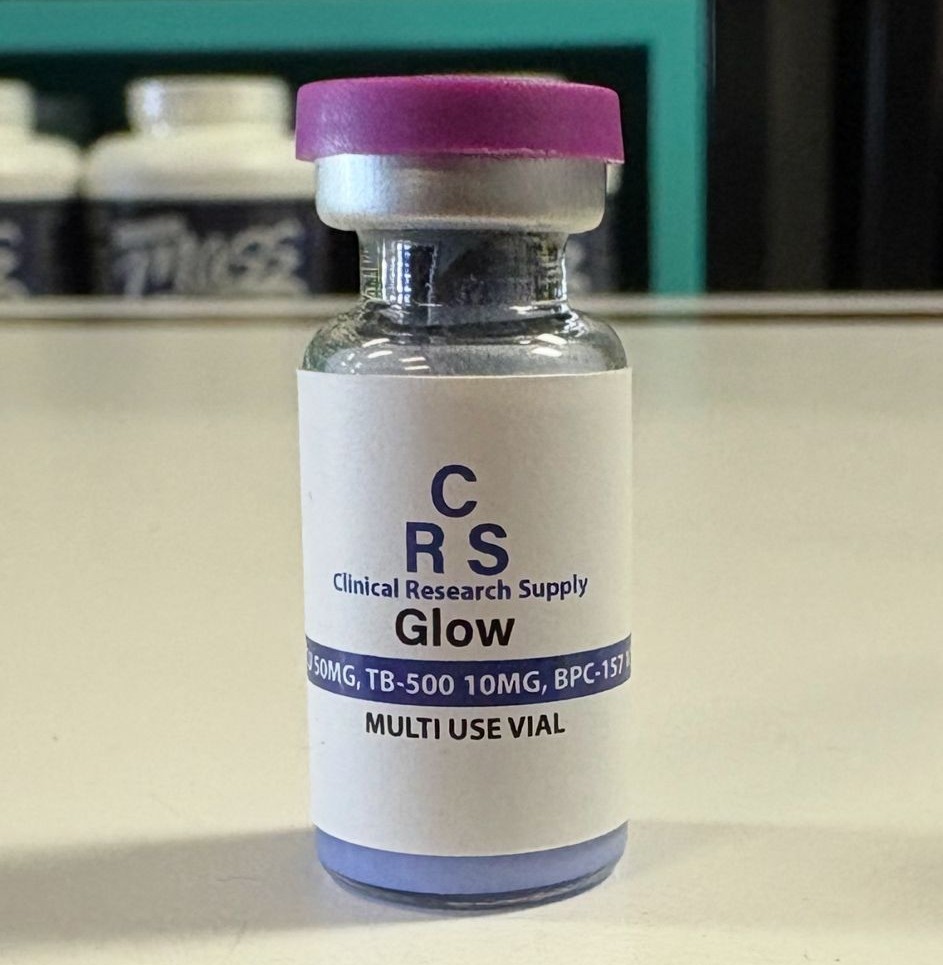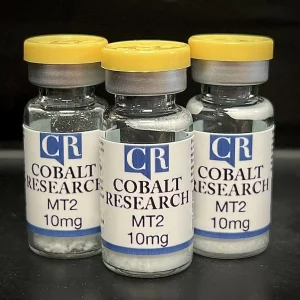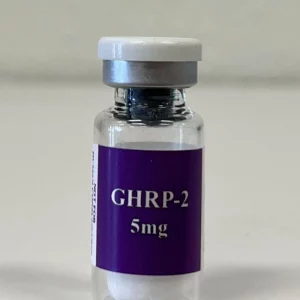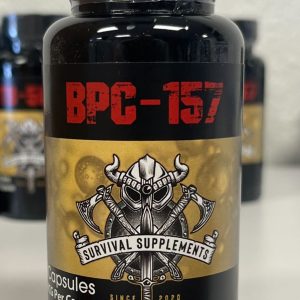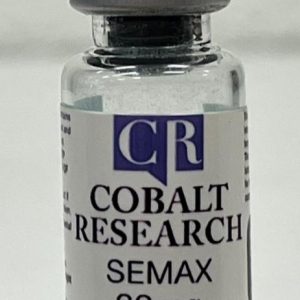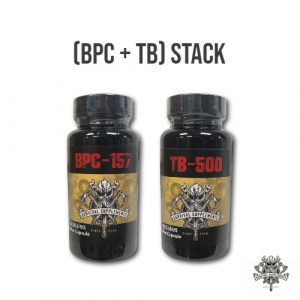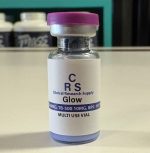
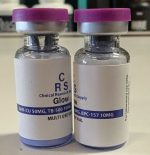
Glow is a comprehensive regenerative peptide formulation designed for advanced research applications. This blend combines three highly regarded peptides: BPC-157 (10mg), TB-500 (10mg), and GHK-Cu (50mg). Each peptide has been studied in scientific contexts for its unique contribution to tissue healing, repair, and rejuvenation. Together, they create a multi-dimensional research tool that enables investigators to examine overlapping and synergistic pathways of regeneration. Glow is manufactured to high purity standards and provided in lyophilized form to preserve integrity until use.
Composition and Research Rationale
BPC-157 (10mg)
BPC-157 is a synthetic pentadecapeptide derived from a naturally occurring protective gastric protein. Research has explored its role in accelerating the repair of tendons, ligaments, muscles, and gastrointestinal tissues. It has also been studied for its influence on angiogenesis, inflammatory regulation, and protective effects in models of tissue damage. At a research concentration of 10mg, BPC-157 in Glow provides sufficient material for in-depth investigations into cellular repair and protective mechanisms.
TB-500 (10mg)
TB-500 is a synthetic analog of thymosin beta-4, a naturally occurring protein that plays a central role in actin regulation and cell migration. Research has examined TB-500 in contexts ranging from wound healing to cardiovascular repair, with particular attention to its effects on tissue regeneration and structural recovery. The inclusion of 10mg TB-500 in Glow creates a balanced pairing with BPC-157, allowing researchers to examine how these two regenerative peptides may complement one another in studies of healing and repair.
GHK-Cu (50mg)
GHK-Cu is a copper-binding tripeptide with decades of research history in dermatology and regenerative biology. It has been studied for its ability to stimulate collagen synthesis, promote skin remodeling, and support hair follicle vitality. GHK-Cu has also been linked to wound healing and tissue rejuvenation through its activity in cellular signaling and extracellular matrix repair. By including 50mg of GHK-Cu, Glow broadens its scope beyond musculoskeletal and systemic repair into areas of cosmetic and dermal research.
Research Applications
Glow’s unique three-part composition makes it suitable for a broad spectrum of laboratory investigations. Potential areas of focus include:
-
Musculoskeletal and Soft Tissue Healing: Evaluating tendon, ligament, and muscle recovery through the combined effects of BPC-157 and TB-500.
-
Angiogenesis and Vascular Support: Studying new blood vessel formation and improved circulation in models of tissue recovery.
-
Skin Health and Collagen Synthesis: Exploring the role of GHK-Cu in dermal rejuvenation, wrinkle reduction, and scar repair.
-
Hair Growth and Follicle Support: Investigating cosmetic applications of GHK-Cu in follicular vitality.
-
Combinatorial Regeneration Studies: Analyzing how BPC-157, TB-500, and GHK-Cu interact synergistically to enhance healing and repair.
-
Inflammation and Recovery Models: Assessing how the blend may modulate inflammatory responses to facilitate faster tissue recovery.
Quality and Purity
Glow is produced under stringent quality assurance protocols. Each peptide undergoes analytical validation, including HPLC and mass spectrometry, to confirm purity and molecular identity. The blend is supplied as a sterile, lyophilized powder in sealed vials to maximize stability during storage and transport. Researchers can rely on consistent, reproducible quality for experimental design and study outcomes.
Storage and Stability
-
Unreconstituted (Lyophilized): Store at -20°C for optimal long-term preservation.
-
Reconstituted: Store at 2–8°C and protect from light.
-
Handling Guidance: Avoid repeated freeze-thaw cycles and use sterile technique during reconstitution.
Advantages of Glow
-
Combines BPC-157 and TB-500 at equal 10mg concentrations for balanced regenerative study potential.
-
Includes 50mg of GHK-Cu, expanding applications into skin and cosmetic research.
-
Designed to allow researchers to examine systemic, musculoskeletal, and dermal regeneration simultaneously.
-
Manufactured to exacting purity standards with full analytical verification.
The Glow Protocol: Research Rationale
The Glow formulation was developed to provide researchers with a multi-pathway regenerative model by combining three peptides with distinct but complementary roles. This structured blend, referred to as the “Glow protocol,” enables investigation into overlapping processes of tissue recovery, repair, and rejuvenation.
Step 1: Musculoskeletal Recovery Pathways
BPC-157 and TB-500 have each been extensively studied in preclinical settings for their potential roles in connective tissue healing. The Glow protocol leverages their synergy:
-
BPC-157 has been linked to angiogenesis, tendon repair, and gastrointestinal protective effects.
-
TB-500 has been studied for its involvement in actin regulation, cellular migration, and wound healing.
Together, they provide a foundation for research into musculoskeletal and systemic repair.
Step 2: Dermal and Cosmetic Regeneration
The inclusion of GHK-Cu expands the Glow protocol into skin, hair, and extracellular matrix research. GHK-Cu has been widely studied for:
-
Collagen stimulation and extracellular matrix remodeling.
-
Skin elasticity and wrinkle repair.
-
Hair follicle vitality and dermal rejuvenation.
By combining regenerative and cosmetic peptides, Glow allows a broader scope of laboratory studies.
Step 3: Integrated Systemic Studies
Glow enables research into how these peptides may function collectively, rather than in isolation. The protocol creates opportunities to examine:
-
Inflammatory modulation and recovery acceleration.
-
Angiogenesis and vascular repair in systemic models.
-
Cross-disciplinary regeneration spanning musculoskeletal, dermal, and cellular health pathways.
Research Applications of the Glow Protocol
-
Soft tissue repair models
-
Wound healing and angiogenesis studies
-
Skin rejuvenation and anti-aging investigations
-
Hair follicle vitality research
-
Combinatorial peptide interactions in systemic regeneration
Frequently Asked Questions
How does Glow differ from standalone BPC-157 or TB-500?
Glow combines two regenerative peptides with complementary mechanisms of action and further enhances the formula with GHK-Cu, which adds value in cosmetic and collagen-focused research.
Why was TB-500 included at 10mg instead of lower amounts?
A 10mg concentration allows for thorough laboratory investigation of TB-500’s regenerative properties and provides balanced parity with the 10mg of BPC-157 included in each vial.
What role does GHK-Cu play in this formulation?
GHK-Cu introduces a dermatological and rejuvenation element. It has been studied extensively for collagen stimulation, wound healing, and hair follicle vitality, expanding Glow’s applications beyond internal tissue recovery.
What form does Glow come in?
Glow is provided in sterile lyophilized vials to ensure long-term stability and research flexibility.
Can Glow be used in humans or animals?
No. Glow is strictly intended for laboratory research. It is not approved for human or veterinary use.
Glow (BPC-157 10mg, TB-500 10mg, GHK-Cu 50mg) is provided exclusively for research and laboratory purposes. It is not approved for human consumption, medical use, or veterinary administration. Survival Supplements supplies this product solely for scientific investigation under appropriate regulatory compliance.
Related products
BPC-157 + TB-500 Stack
In stock

